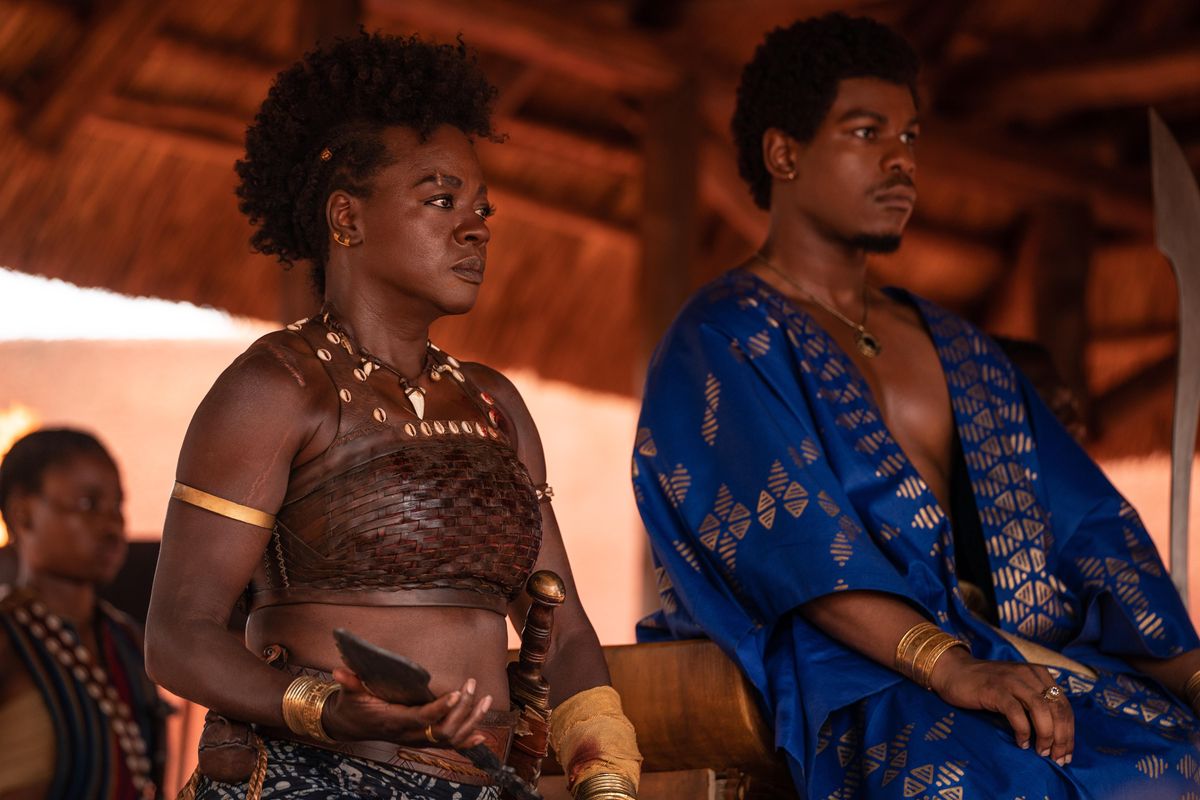Review: The Triumph of ‘The Woman King’
Directed by Gina Prince-Bythewood, the film had to meet many expectations from the moment the trailer was released. And it does.

Even before it hit the cinema circuit, The Woman King carried the weight of projections about what it would show. It had to prove it had complex storytelling for fear of falling into the reactionary trap of “girlboss wokeism.” Chief of all, how it addresses the participation of the Dahomey Kingdom in the slave trade.
Plucking its cast from different parts of the Black diaspora (Viola Davis is African American, Jimmy Odukoya is Nigerian, Lashana Lynch is of Jamaican descent, John Boyega and Sheila Atim are Nigerian British and Ugandan British, respectively) was just the bare minimum.
The Woman King chooses a narrative scope (19th century) and churns out tremendous stakes. Between the Dahomey Kingdom and Oyo Empire are intermittent battles, their fierce rivalry stemming from access to European trade and dominance over the port of Ouidah, the major trading route in the whole region.
Among the first crucial scenes we see are that of Thuso Mbedu (The Underground Railroad), who plays the defiant teenager Nawi, at the Dahomey palace. Her father had taken her there in frustration, in the hopes that she would be taken as a wife by King Ghezo (Boyega) after a failed attempt to sell her off to a suitor. Here, she’s taken in by Izogie (Lynch), an experienced Dahomey fighter who gives her a tour around the training court, hallways, and barracks.
Nawi’s decision to be a Dahomey warrior is quite drastic: the liquid optimism in her eyes, the determined set of her jaw, and the manufactured gimmicks she uses to get the attention of Viola Davis’ Nanisca, the general of the Agojie all-female military unit. Nanisca isn’t just a warrior who cuts down bodies with her machete on the battlefield; she’s made more complex with a traumatic past.
Davis’ portrayal of Nanisca is kinetically athletic as much as it is uncompromisingly grounded in the film’s emotional themes. And while it’s easy to be caught up in Davis’ performance, Mbedu’s character is at the heart of important moments in the movie. In one scene, she’s responsible for creating a gunpowder explosion stuffed within a bamboo stick figure used during target practice. Eventually, this will be used as a preliminary war tactic against the Oyo military. In another scene where the Dahomey warriors double-cross Oba Ade at the Ouidah port, she goes against the team’s plan and spontaneously chops down a rope to cage in an onslaught of Oba Ade’s men.
It’s Mbedu’s Nawi that supplies Nanisca with military intelligence, warning her about Oyo’s plan to strike Dahomey. In Oyo captivity after being taken as battle spoils, on a horse, she tells a fellow Dahomey sister to roll off the carriage since she was untied. Back at Dahomey, the runaway captive informs Nanisca and the rest about Nawi’s captivity, who had been presumed dead. This incentivizes the rest to come to her rescue.
In the final battle sequence, Nawi resurfaces as a scene stealer, in a way that complicates her relationship with Nanisca. She pulls her own weight for the movie’s emotional beats, blurring the lines between her personal boundary and self-preservation of Dahomey. The Woman King was shot in South Africa, using Kwazalu and parts of Cape Town as stand-ins for West Africa. This puts Mbedu in familiar territory, not only as a logistical convenience but also as an elemental connection to the story.
Regardless of what role she plays, Mbedu has shown that she has what it takes to maintain a lead character. Aside from her performance and that of the other cast members, the stunt choreography in action scenes is immaculate, including the realized environments. There are hang-ups about the accents and language though, especially the odd scene where a Portugese slave trader meets with King Ghezo at the palace. Initially speaking Portuguese by the European, the ruler asks that his guest speak his own language. It turns out to be English.
The main criticism about idealizing an African kingdom that used women warriors as slave raiders is met with a nuanced juncture in the film, where Nanisca tries to convince King Ghezo that the prosperity of Dahomey shouldn’t be hinged on capturing and trading slaves. This is far from revisionist history. Rather, it indicates the consciousness of morality that possibly could have been present during those times.
- African Films Playing at the 2022 Toronto Film Festival - OkayAfrica ›
- Thuso Mbedu's new Hollywood film 'The Woman King' will be shot in ... ›
- 'The Woman King' Cast on Filming in South Africa - OkayAfrica ›
- How Nana Afriyah Helped Bring the Costumes of ‘The Woman King’ to Life - OkayAfrica ›
- Tributes Pour in for South African Actor Mpho Sebeng - Okayplayer ›

